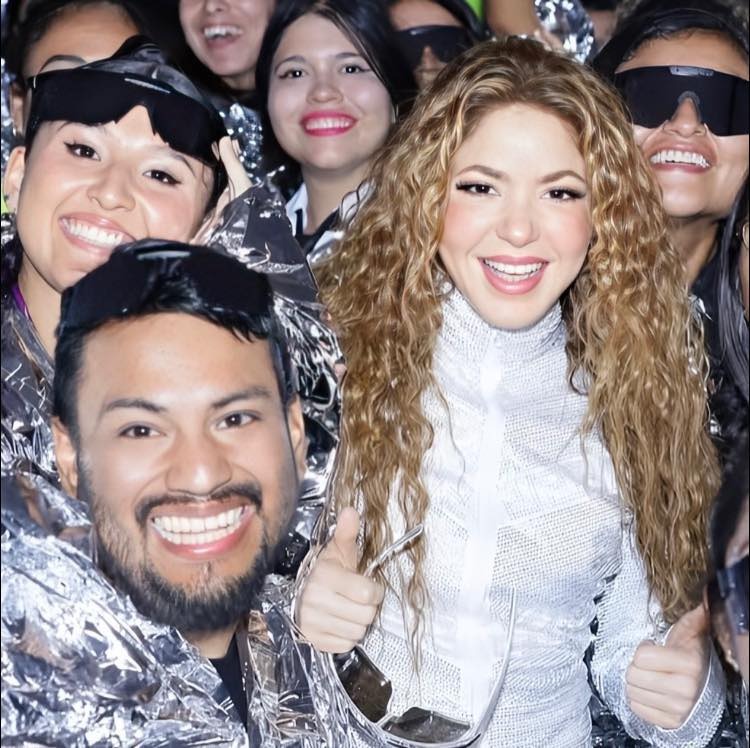Arte y Cultura
Florida Landscaping Ideas – The Daily Scoup News

Florida is known for its beautiful landscapes, and it’s no surprise that people want to enhance their properties with beautiful landscaping. In this article, we’ll share some Florida landscaping ideas that will help you create a beautiful and functional outdoor space.
Native Plants
One of the best ways to create a beautiful and sustainable landscape is by using native plants. Native plants are adapted to the local climate and require less water and maintenance than non-native species. Some popular native plants in Florida include Sabal palms, Silver buttonwoods, Coontie palms, Firebushes, and Simpson’s stoppers.
Incorporate Hardscaping
Incorporating hardscaping elements like pavers, rocks, or retaining walls can add texture and contrast to your landscape design. Hardscaping can also help control erosion, and provide a defined area for outdoor activities.
Create a Focal Point
A focal point can be anything that draws the eye and creates a sense of visual interest. A popular focal point in Florida landscapes is a water feature like a fountain or pond. Other popular options include a fire pit or a sculpture.
Consider the Seasons
Florida has a unique climate, so it’s important to consider the seasons when planning your landscape design. For example, you may want to plant shade trees to keep your property cool in the summer, or choose drought-tolerant plants to conserve water during the dry season.
Think about Color
Color is an important element of any landscape design. Florida landscapes often incorporate vibrant colors like red, orange, and yellow. Consider planting flowers like Marigolds, Impatiens, or Lantanas to add a pop of color to your landscape.
Use Mulch
Mulch is a great way to conserve water and protect your plants from extreme temperatures. In Florida, pine straw and cypress mulch are popular options. Mulch also adds a finished look to your landscape design.
Incorporate Lighting
Incorporating lighting in your landscape design can create a beautiful ambiance and make your outdoor space more functional. Consider adding path lights, accent lights, or string lights to create a warm and inviting atmosphere.
Create Privacy
Privacy is important for many homeowners, especially in densely populated areas. Consider adding hedges, shrubs, or trees to create a natural barrier between your property and your neighbors. Bamboo is a popular option for creating a natural privacy screen.
Add Functional Elements
Functional elements like a seating area, outdoor kitchen, or a pool can add value to your property and make your outdoor space more enjoyable. Consider your needs and budget when deciding which functional elements to incorporate into your landscape design.
Hire a Professional
Landscaping can be a lot of work, and it’s not always easy to achieve the desired results on your own. Consider hiring a professional landscaper to help you design and maintain your outdoor space.
Florida Landscaping Ideas – FAQs:
Q: What is the best time to plant in Florida?
A: The best time to plant in Florida is during the fall or winter months when temperatures are cooler and there is less risk of drought.
Q: How often should I water my plants in Florida?
A: Watering your plants regularly is essential to maintaining a healthy and thriving garden, but it can be a bit tricky in Florida’s hot and humid climate. The amount of water your plants need will depend on a variety of factors, including the type of plant, the soil type, and the time of year.
During the summer months, when temperatures can soar well into the 90s, you may need to water your plants more frequently. In general, most plants will need to be watered at least once a week, but some may require more frequent watering, especially those in containers or hanging baskets.
One tip for watering your plants in Florida is to water deeply and less frequently. This helps promote deeper root growth, which can help your plants better withstand drought conditions. Additionally, you may want to consider investing in a drip irrigation system or soaker hoses, which can help conserve water while ensuring that your plants receive the moisture they need.
It’s also important to avoid overwatering your plants, as this can lead to root rot and other problems. You can check the soil moisture level by sticking your finger about an inch into the soil. If it feels dry at this depth, it’s time to water.
By following these tips, you can help ensure that your plants thrive in Florida’s unique climate.
Q: What are some drought-tolerant plants that are well-suited to Florida?
A: Florida’s hot and humid climate can be challenging for some plants, but there are many drought-tolerant options that are well-suited to the region. These plants are able to withstand periods of dry weather without requiring frequent watering, making them a great choice for homeowners who want to conserve water and create a low-maintenance garden.
Some examples of drought-tolerant plants that grow well in Florida include:
- Agave
- Cactus
- Lantana
- Oleander
- Blanket Flower
- Bougainvillea
- Firebush
- Yucca
- Gopher Apple
- Beautyberry
These plants come in a variety of colors, shapes, and sizes, making it easy to find options that will work well in your garden. When selecting drought-tolerant plants, it’s important to consider factors like sun exposure, soil type, and planting location to ensure that they will thrive in your specific environment.
Q: How can I create an eco-friendly landscape in Florida?
A: Creating an eco-friendly landscape is a great way to reduce your environmental impact while also enjoying the beauty of nature in your own backyard. Here are a few tips for creating a sustainable landscape in Florida:
- Choose native plants: Native plants are adapted to Florida’s unique climate and require less water and maintenance than non-native species. Additionally, they provide important habitat for local wildlife.
- Conserve water: Water conservation is an important consideration in Florida, where droughts are common. Consider installing a rain barrel to collect rainwater for irrigation, and choose drought-tolerant plants that require less water.
- Use organic fertilizers: Synthetic fertilizers can leach into the water supply and harm local ecosystems. Consider using organic fertilizers instead, which are made from natural materials and are gentler on the environment.
- Minimize lawn areas: Lawns require a lot of water and maintenance, so consider reducing the size of your lawn or replacing it with native groundcovers or other low-maintenance plants.
- Use integrated pest management: Instead of relying on harsh chemicals to control pests, use integrated pest management techniques, such as planting pest-resistant plants and using natural predators to control pest populations.
By following these tips, you can create a beautiful and sustainable landscape that will benefit both your family and the environment.
Actualidad
Club de fans ShakiChanel sortea perfume oficial de Shakira tras anuncio de tercera fecha en Lima

La emoción por el regreso de Shakira a Perú continúa en ascenso. Tras el anuncio oficial de la tercera fecha del tour «Estoy Aquí 2025» en Lima, el club de fans ShakiChanel ha lanzado un sorteo especial de un perfume oficial de la artista, como parte de sus actividades para promocionar la venta de entradas a través de la plataforma Masterlive.
El sorteo se realiza a través de su página oficial de Facebook y vence hoy, martes 15 de julio, a las 8:00 p.m.. Los fans interesados pueden participar ingresando al siguiente enlace:
🔗 https://www.facebook.com/profile.php?id=61573558325578
Esta iniciativa no solo busca incentivar la compra de entradas, sino también fortalecer los lazos de una comunidad de fans que vibra con cada paso de su artista favorita. ShakiChanel se ha consolidado como uno de los clubes de fans más activos del país, y trabaja de la mano con otros clubs de fans con un solo objetivo: disfrutar, compartir y celebrar la música de Shakira.

“ShakiChanel es más que un club, es una familia. Con este sorteo queremos agradecer a quienes siguen acompañándonos y, sobre todo, seguir difundiendo la emoción de ver a Shakira nuevamente en vivo. Queremos que nadie se quede fuera de esta experiencia inolvidable”, expresó Luis Carlos Ramírez Herrera, presidente del club, quien tuvo la oportunidad de acompañar a la cantante en primera fila durante el concurso Caminando con la Loba, organizado por Masterlive. Este certamen premió a fans que demostraron su pasión por Shakira con videos creativos, ganando así la oportunidad de caminar junto a la artista como parte de la entrada al concierto que ofreció en marzo pasado.
Las entradas para el tour “Estoy Aquí 2025” están disponibles en:
🎟️ https://teleticket.com.pe/shakira-estoy-aqui-2025
Desde ShakiChanel invitan a todos los fans del país a participar en el sorteo y ser parte de la fiesta que marcará el regreso de Shakira a los escenarios peruanos.
Actualidad
San Antonio de Cañete se alista para su gran fiesta patronal con tradición, sabor y cultura viva

En una emotiva ceremonia realizada en el Museo Nacional Afroperuano del Congreso de la República, el alcalde distrital de San Antonio de Cañete, Juan Edgar Malásquez Jara, anunció el programa oficial de actividades por el 119º aniversario patronal de San Antonio, festividad que se llevará a cabo del 31 de mayo al 14 de junio.
Durante su intervención, el alcalde Malásquez, destacó el valor histórico, religioso y cultural de esta festividad, que representa la mayor celebración del distrito y precede incluso a su creación política como distrito. Además, subrayó el papel articulador del gobierno local en la promoción del turismo, las tradiciones y la fe del pueblo sanantoniano. El programa de actividades incluye misas diarias, procesiones, ferias gastronómicas, presentaciones de danzas típicas, actividades culturales, así como el vigésimo Concurso Nacional de Marinera Norteña el 8 de junio y el tradicional concurso de faroles escolares el 9 de junio. Todo esto en un entorno de profunda espiritualidad y confraternidad comunitaria.

La festividad contará también con la participación de distritos vecinos, cuyos alcaldes llegarán acompañados de las imágenes de sus santos patrones, reforzando la hermandad entre los pueblos del valle.
En tal sentido, se resaltó la riqueza gastronómica de San Antonio, donde la tradición y el sabor se funden en platos emblemáticos como el picante sanantoniano, la sopa bruta con carapulca, el arroz con pato y postres típicos como la chapana. Todo ello acompañado por bebidas tradicionales como la chicha de maní y la refrescante mochila de jora, elaboradas por cocineras y cocineros que mantienen viva la herencia culinaria del distrito. “San Antonio abre sus puertas y extiende una cálida invitación al público a ser parte de esta celebración que honra la historia, exalta la cultura y deleita los sentidos con lo mejor de su identidad, enfatizó la autoridad edil.

Por otro lado, al ser consultado sobre la reubicación de centro penitenciario juvenil ‘Maranguita’, el burgomaestre reiteró su firme oposición a dicho traslado a San Antonio, argumentando el impacto negativo que ello tendría sobre el desarrollo turístico, la seguridad y la identidad del distrito.
-

 Especiales4 años ago
Especiales4 años agoOpinión: LA LIGA CONTRA MESSI
-

 Ciencia y Tecnología4 años ago
Ciencia y Tecnología4 años agoProcesadora peruana Torre Blanca impulsa exportación de fruta a países asiáticos
-

 Arte y Cultura3 años ago
Arte y Cultura3 años agoMinedu reconformará comisión organizadora de Universidad Nacional Autónoma de Tayacaja “Daniel Hernández Murillo”
-

 Ciencia y Tecnología4 años ago
Ciencia y Tecnología4 años agoAtenciones del Servicio de Publicidad Registral en Línea de la Sunarp crecieron en 122 %
-

 Ciencia y Tecnología4 años ago
Ciencia y Tecnología4 años agoDepsa lanza nuevo servicio Medical Box para el sector Salud
-

 Lima Norte2 años ago
Lima Norte2 años agoRumbo al GOTHIA CUP en Luxemburgo Suecia con su categoría sub 11 – Señal Alternativa
-

 Deportes2 años ago
Deportes2 años ago🔴#ENVIVO Cienciano vence 5-2 a Alianza Atlético en Cusco
-

 Noticias2 años ago
Noticias2 años agoMininter anuncia creación de nueva categoría en PNP
